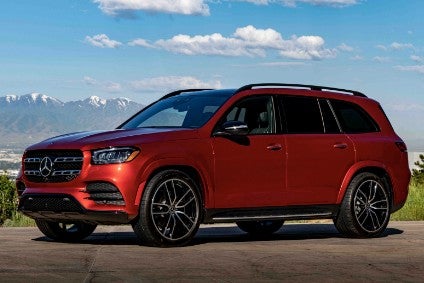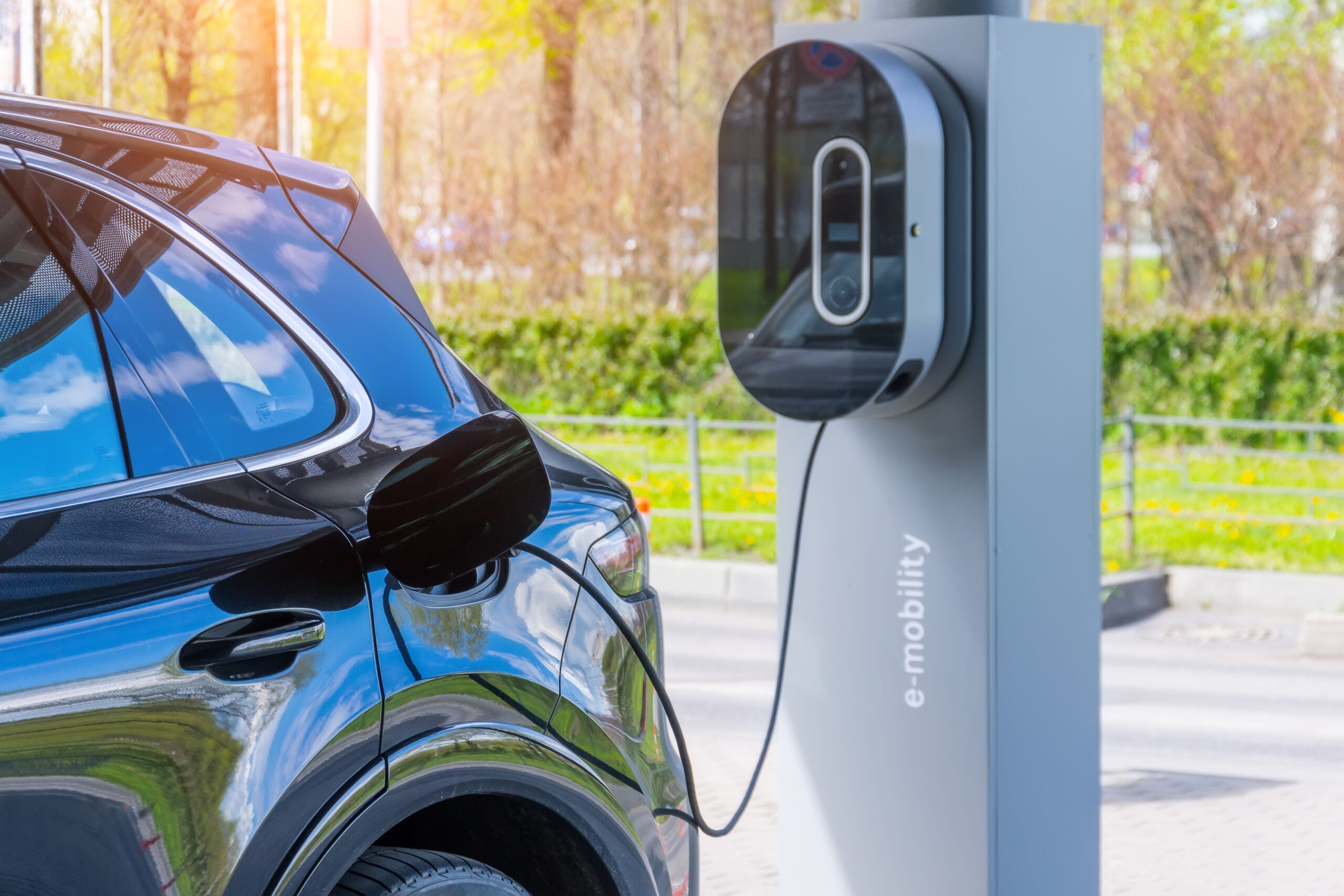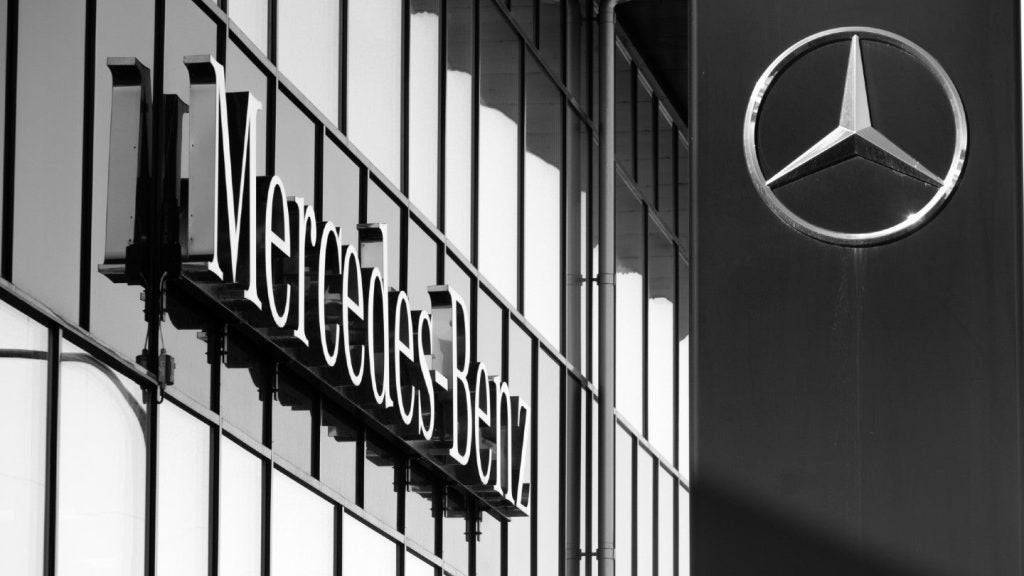
Will Mercedes-Benz ever cease expanding its range of SUVs? Or rather, why would Daimler stop launching ever more plus replacement models when there seems to be seemingly limitless demand in many markets?
What IS changing is the fuel efficiency of such vehicles, and there is much innovation yet to come as China and Europe’s fuel consumption and emissions legislation grows ever more stringent.
Daimler has said recently that it will now shift away from hydrogen fuel cell SUVs – the GLC F-Cell has just been discontinued – and bring in more hybrids, more PHEVs and high-efficiency petrol and diesel engines.
How well do you really know your competitors?
Access the most comprehensive Company Profiles on the market, powered by GlobalData. Save hours of research. Gain competitive edge.

Thank you!
Your download email will arrive shortly
Not ready to buy yet? Download a free sample
We are confident about the unique quality of our Company Profiles. However, we want you to make the most beneficial decision for your business, so we offer a free sample that you can download by submitting the below form
By GlobalDataHere follows an outline of certain models from smallest (GLA: 4.4) to longest (GLS: 5.2 metres), with full details and a complete line-up – GLA, GLB, GLC, GLC Coupé, GLE, GLE Coupé, G, GLS – to be found in PLDB (see link at end).
H 247, the successor to the GLA-Class, announced to the media in December last year and available in Europe since earlier in June, uses the MFA 2 architecture. It is manufactured at two plants: Rastatt and Beijing. Assembly in Brazil, India and Thailand should follow later in the year. The second generation GLA is 30 mm wider and 100 mm taller but 14mm shorter.
Only one engine has been announced. This is M 282, the 1,332cc four-cylinder petrol turbo which is shared with the Renault-Nissan-Mitsubishi Alliance. In the GLA 200 it produces 120 kW and 250 Nm, sending drive to the front wheels via a seven-ratio dual-clutch transmission. There is also a GLA 250 which has outputs of 165 kW and 250 Nm in both FWD and AWD forms. For further details, including the life cycle, see PLDB.
The second generation GLC-Class (BR254) is expected to be announced to the media in June 2022 and be in production two months later at Bremen. However, Daimler stated in April 2019 that this model would also be made at Sindelfingen. Confirmation of the lead plant’s identity is awaited.
There will of course also be build in China as that country is the current GLC’s number one market. This will be at one of the Beijing Benz joint venture’s plants. Whether or not Valmet will continue additional assembly in Finland is not yet known.
The GLE 350 de was announced in September 2019 on the eve of its public premiere at the Frankfurt motor show. Although manufactured in the USA it is not available there.
Unusual for being a diesel-electric plug-in hybrid, the 350 de has maximum system outputs of 235 kW (320 hp) and 700 Nm. The 1,950cc four-cylinder engine produces 143 kW (194 hp) and 400 Nm, with the motor rated at 100 kW and 440 Nm. The battery capacity is 31.2 kWh and the maximum electric range is claimed to be “over 100 kilometres” (according to NEDC).
The drivetrain has a torque converter with integrated lockup clutch as a starting device, and an additional clutch between the engine and electric motor for all-electric driving. The stator of the electric motor is permanently integrated into the traction head housing, while the rotor is between the power flow of the separating clutch and transmission input. On-demand stator and rotor cooling allows use of the motor’s peak and continuous output.
The high-voltage on-board electrical system supplies not only the drive components and the vacuum pump of the regenerative braking system, but also the electric refrigerant compressor and the high-voltage heater booster. Both allow pre-entry climate control of the interior not only in summer but also in winter, because they can also operate without the combustion engine.
Details of other GLE-Class variants can be found in PLDB. As for the second generation GLE Coupé, this was announced to the media in August 2019, as was the Mercedes-AMG GLE Coupé (see next report or PLDB). Both had their public premieres soon after at the Frankfurt IAA, arriving at dealerships in North America and Europe a few months ago, just before most such retail outlets were closed.
As well as having a different body, the Coupé has a wheelbase which is 60mm shorter than in the GLE-Class. It is 4,939 mm long and 2,010 mm wide (39 mm longer and 7 mm wider than its predecessor) with a wheelbase that grew by 20mm. The boot’s cubic capacity is 655 litres.
The two main engines for European markets are both versions of OM 656, a 2,925 cc straight-six diesel which complies with the Euro 6d standard (RDE/Real Driving Emissions Step 2): GLE Coupé 350 d 4MATIC (200 kW/272 hp and 600 Nm) and GLE Coupé 400 d 4MATIC (243 kW/330 hp and 700 Nm). A plug-in hybrid will be announced at a later date as will non-PHEV petrol variants. The life cycle should be six-seven years with a facelift in 2023.
The latest GLS-Class was a world debut at the New York auto show in April 2019. It uses MHA (Modular High Architecture) which has links to MRA. Daimler is extremely keen to take as many sales as it can from the Range Rover so styled and priced the new GLS accordingly. There are both six- and seven-seat layouts and all seats fold electrically.
Even though Mercedes’ biggest SUV is 5,207 mm long and has a wheelbase that’s 60 mm up on the previous GLS, there might also be an even lengthier body style to come.
The first versions were the GLS 350 d 4MATIC, GLS 400 d 4MATIC, GLS 450 4MATIC (not for Europe) and GLS 580 4MATIC. The last of the four was added shortly after the 450 and the diesels. It was the first Mercedes-Benz to be powered by an electrified V8 petrol engine with an integrated starter-generator.
The 580 has outputs of 360 kW (489 hp) and 700 Nm of torque, with a further 250 Nm and 16 kW/22 hp available via what Daimler calls ‘EQ Boost’ for short periods. The ISG is responsible for hybrid functions such as EQ Boost or energy recuperation, while allowing fuel savings.
The starter-generator eliminates the need for a belt drive for ancillary components at the front of the engine, reducing length. The separation of intake/exhaust creates space for close-coupled exhaust after-treatment. A 48V system also powers the water pump and air-conditioning compressor.
The GLS 450 has a six-cylinder in-line engine, also electrified with 48-volt technology. It produces 270 kW (367 hp) and 500 Nm, with a further 250 Nm of torque and 16 kW/22 hp available via EQ Boost over short periods.
As for the diesels, both are powered by OM 656, an in-line six. The GLS 350 d 4MATIC has outputs of 210 kW (286 hp) and 600 Nm, while in the GLS 400 d 4MATIC power is 243 kW (330 hp) and torque. OM 656 is compliant with Euro 6d (RDE/Real Driving Emissions Step 2). This standard, which became mandatory in the European Union on 1 January for new models, applies to all vehicles on 1 January 2021.
The X 167 series GLS-Class is due for a facelift in 2023 and to be replaced in 2027.
Reports for many other manufacturers’ future models are grouped in the OEM product strategy summaries section of just-auto.com.
Future platform intelligence
More detail on past, current and forthcoming models can be found in PLDB, the future vehicles database which is part of GlobalData’s Automotive Intelligence Center. That includes the Mercedes SUVs not discussed in this report.
This is the second of five features exploring the passenger car brands of Daimler AG. It follows a focus on Mercedes-Benz cars. Next comes Maybach, smart and China’s Denza; to be followed by Mercedes-AMG and Mercedes EQ.







